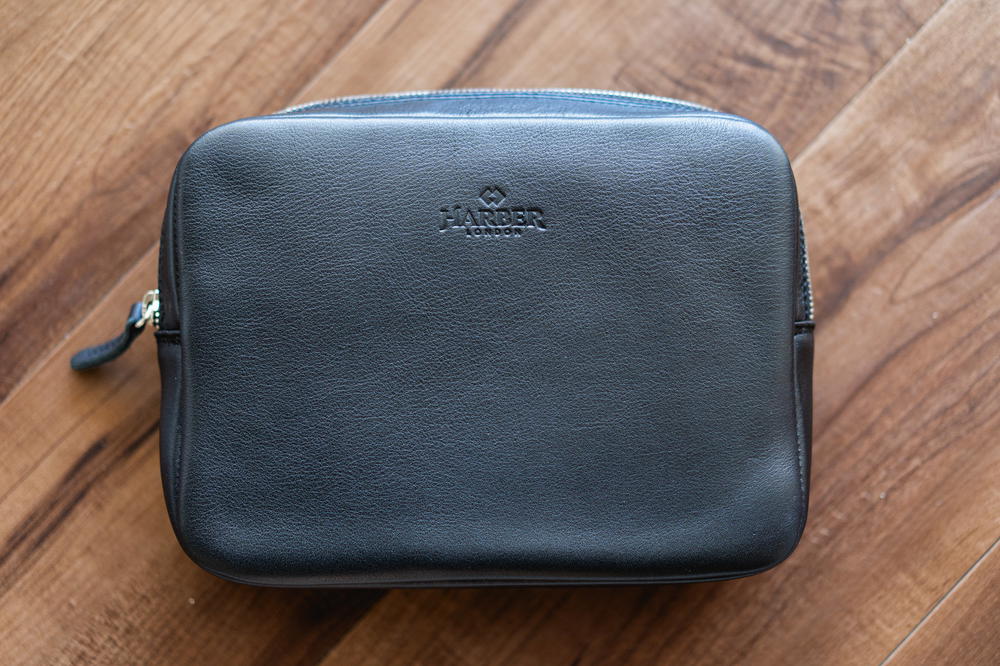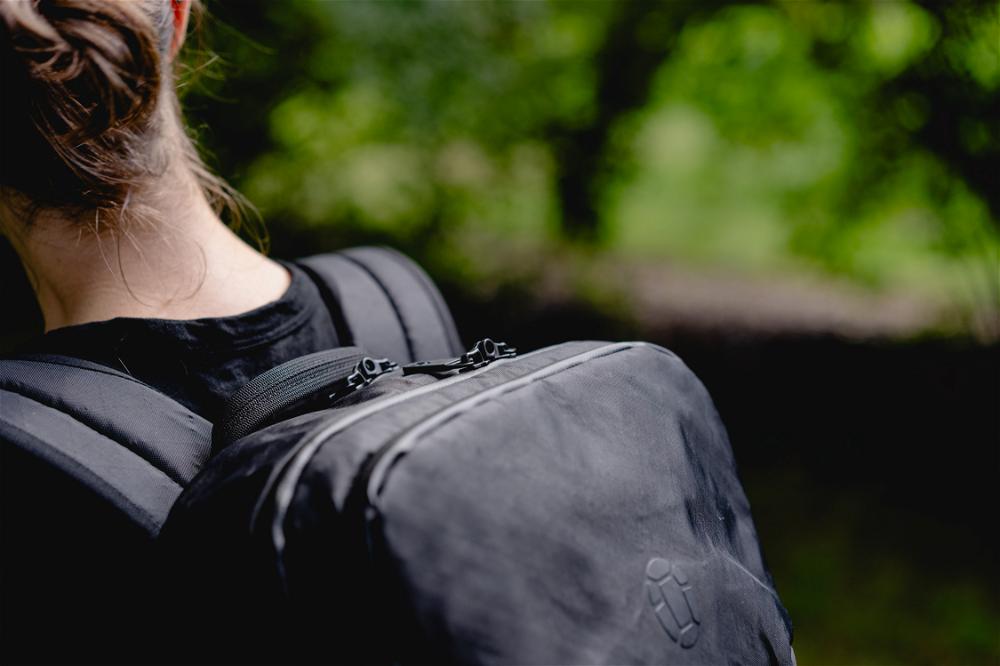Rain Jackets Review Criteria

See how we score rain jackets across detailed criteria with weighted ratings.
This article may contain affiliate links. We earn a small commissions when you purchase via those links — and it's free for you. It's only us (Becca & Dan) working on this website, so we value your support! Read our privacy policy and learn more about us.
Table of contents
- Scoring Overview
- Comfort against skin (10%)
- Fit, mobility & layering accuracy (12%)
- Materials, durability & care requirements (8%)
- Breathability & venting performance (12%)
- Temperature regulation (6%)
- Stretch & shape retention (6%)
- Water resistance & storm protection (18%)
- Pocket function & waterproof storage (10%)
- Packability & weight (8%)
- Styling versatility (6%)
- Overall value for price (4%)
- Related Reviews
- Where to go next
This page details the specific criteria we use when reviewing rain jackets. Each criterion has a weight that contributes to the overall score. Learn more about how our scoring system works.
Scoring Overview
Each criterion below is weighted as a percentage of the total score. We evaluate each product on a scale of 1 to 5 for every criterion, then multiply by the weight to calculate the final rating.
Comfort against skin (10%)
Rain jackets often have stiff or slick linings, so this matters more than people expect. I’m evaluating face fabric feel on the neck and wrists, comparing 2.5-layer versus 3-layer liner comfort. I’m checking chafe points at the collar, chin guard and cuffs. I’m testing no-stick feel when wearing short sleeves underneath. This becomes especially important in warm, humid climates where you’re wearing the jacket directly against skin.
Fit, mobility & layering accuracy (12%)
Fit matters more with waterproof jackets because poor fit breaks protection. I’m evaluating layering fit to see if it accommodates a hoodie or sweater underneath. I’m checking shoulder and arm mobility, which is critical when walking or hiking. I’m testing hem length and drop-tail coverage. I’m also assessing hood adjustability for different head sizes. The question is whether the jacket fits correctly and moves with you without compromising weather protection.
Materials, durability & care requirements (8%)
Rain jackets need more maintenance than travel hoodies or sweaters. I’m evaluating waterproof membrane type, comparing PU versus Gore-Tex versus eVent versus proprietary systems. I’m checking face fabric durability, looking at denier ratings and abrasion resistance. I’m testing DWR longevity to see how fast it wets out. I’m assessing ease of washing and re-proofing. I’m also evaluating dry time after heavy rain. This is the you know when you feel it category, but for rain jackets the material choices determine long-term performance.
Breathability & venting performance (12%)
This is one of the most critical differentiators for rain jackets. I’m evaluating moisture vapor transfer rate to see how breathable it feels in practice. I’m checking pit zips or venting systems and how well they control overheating. I’m testing clamminess reduction, which is how it feels inside the jacket during movement. This becomes especially important in humid climates or during all-day use. The question is how well the fabric vents during a city walk or a hike without trapping sweat.
Temperature regulation (6%)
Rain shells don’t provide warmth. They regulate through layering. I’m evaluating comfort range when layered correctly. I’m testing wind blocking, which has a huge impact on perceived warmth. I’m checking heat trapping versus venting in motion. This should reflect shell behavior, not insulation. The question is whether the jacket keeps you comfortable from chilly mornings to warm afternoons while handling wind and temperature shifts.
Stretch & shape retention (6%)
This is only relevant for stretch-woven waterproof jackets. I’m checking mobility and articulation, testing arm reach and torso movement. I’m evaluating cuff and hem elasticity durability. I’m testing shape stability after packing. For non-stretch jackets, I score mobility instead of stretch. The question is whether the jacket returns to form after a long flight or day of wear.
Water resistance & storm protection (18%)
This is the number one category for rain jackets. Rain jackets live or die by protective performance. I’m evaluating waterproof rating, comparing 10k versus 20k versus Gore-Tex standard. I’m testing seam sealing quality. I’m checking zipper waterproofing. I’m assessing storm flap effectiveness. I’m evaluating hood coverage and adjustability. I’m testing cuff and hem sealing against water entry. I’m also checking wind resistance during storms. This is the confidence level of being able to take something out in heavy rain without worrying about your gear getting soaked.
Pocket function & waterproof storage (10%)
This is critical for travel and city use. I’m evaluating pocket sealing, checking waterproof zips or flaps. I’m testing pocket placement, comparing chest versus hand pockets. I’m checking internal pockets for passport and phone storage. I’m assessing accessibility while wearing a backpack. Rain jackets frequently get knocked down to one chest pocket, so scoring should reflect practicality. The question is whether items stay put and whether you can access what you need quickly.
Packability & weight (8%)
Rain jackets are often carried more than worn, so this matters. I’m evaluating stuff size, testing pocket-stuffing ability. I’m checking overall weight. I’m assessing bulkiness in a backpack or tote. This is one of the top reasons people choose certain shells for travel. The question is whether the jacket compresses cleanly and adds minimal weight to your pack.
Styling versatility (6%)
I’m evaluating travel to commuting to outdoor crossover adaptability. I’m testing urban versus technical appearance. I’m checking low-profile branding and silhouette. I’m assessing compatibility with jeans, chinos and travel pants. Rain jackets often aim for urban technical style, so this matters. The question is whether this jacket works across different travel scenarios without looking out of place.
Overall value for price (4%)
Where does this land on price versus what you’re actually getting? I’m evaluating membrane quality versus price. I’m assessing long-term DWR maintenance needs. I’m checking warranty and repair options. I’m testing durability in harsh weather. I’m comparing fairness versus competing rain shells. The question is whether the features and performance justify the cost compared to competing options.
Related Reviews
Here are our reviews of rain jackets that use these scoring criteria:
Where to go next
- Return to the Review Scoring System overview
- Go to our Gear Reviews for everything that we’ve reviewed.
- Contact us or work with us.
🎒 Found the right gear?
We research and test the gear we recommend, so you can pack with confidence. If our suggestions improved your gear picks, treating us to a coffee keeps the reviews coming.
Help us test more gearYou may also like
-
![]()
Troubadour Bivy Tote Backpack Review: Stylish Commuter Daypack
Why is the Troubadour Bivy Tote the best laptop business backpack for work, commuting and travel? I assess its sleek modern look and versatile ways to wear in this product review.
-
![Close up of gray Allbirds wool pipers on a sidewalk]()
Allbirds Wool Pipers Review: Trendy, Eco-friendly and Comfy
We review the Allbirds Women's and Men’s Wool Pipers, rate the Allbirds fit and sizing, and see if these stylish walking sneakers are worth it as a versatile travel shoe.
-
![]()
DUER No Sweat Harbour Short Review: High-Rise Travel Shorts
I tested the DUER Women’s No Sweat Harbour Short from city trips to light hikes. Here’s how they fit, pack and perform in real travel life.
-
![]()
Bellroy Transit Plus Backpack Review: Minimal for One-Bag Travel
The Bellroy Transit Plus Backpack is a sleek travel bag for a short trip. See my favorite features that make it worth the price tag, and the things I’m less excited about.
-
![]()
Harber London Tech Dopp Kit Review: Luxurious Tech Organizer
The Harber London Tech Dopp Kit is a beautifully crafted accessory for upscale travelers. Here's why this premium leather tech organizer is worth the investment.
-
![]()
Tortuga Laptop Backpack Review: An Essential Personal Item for Travel?
In this review, I check out the Tortuga Laptop Backpack as a travel bag for working remotely and traveling. Is this travel bag worth it as a personal item or day pack?







